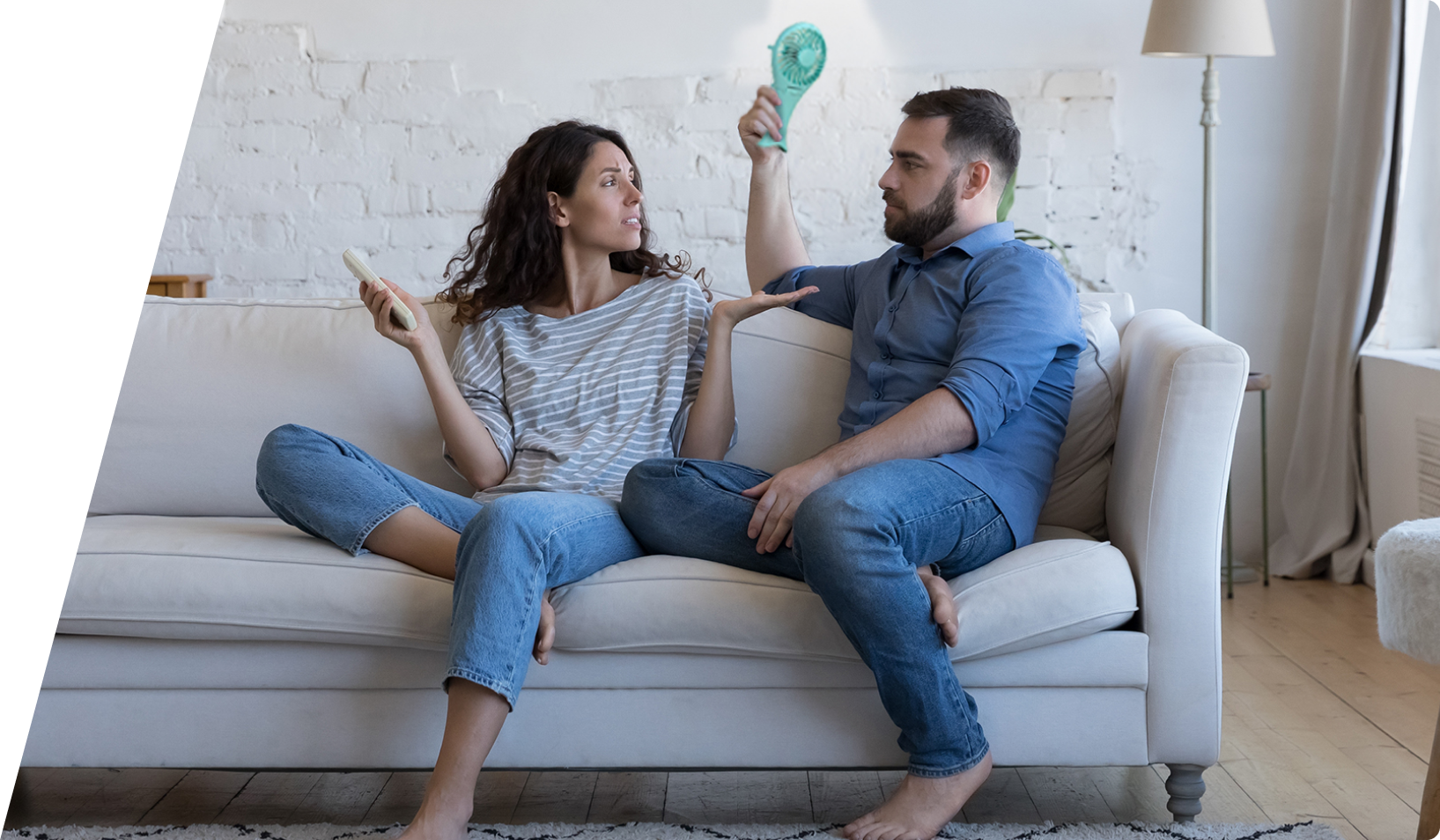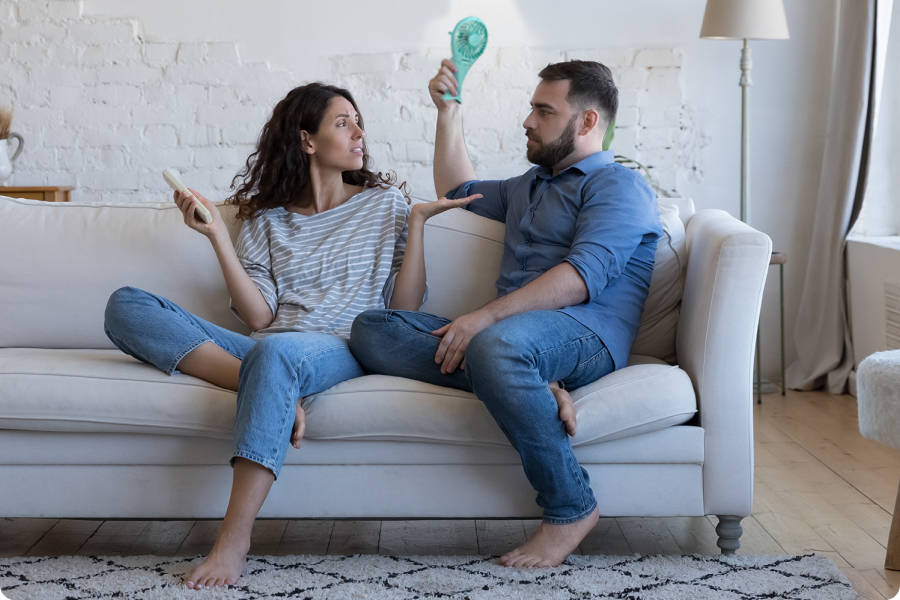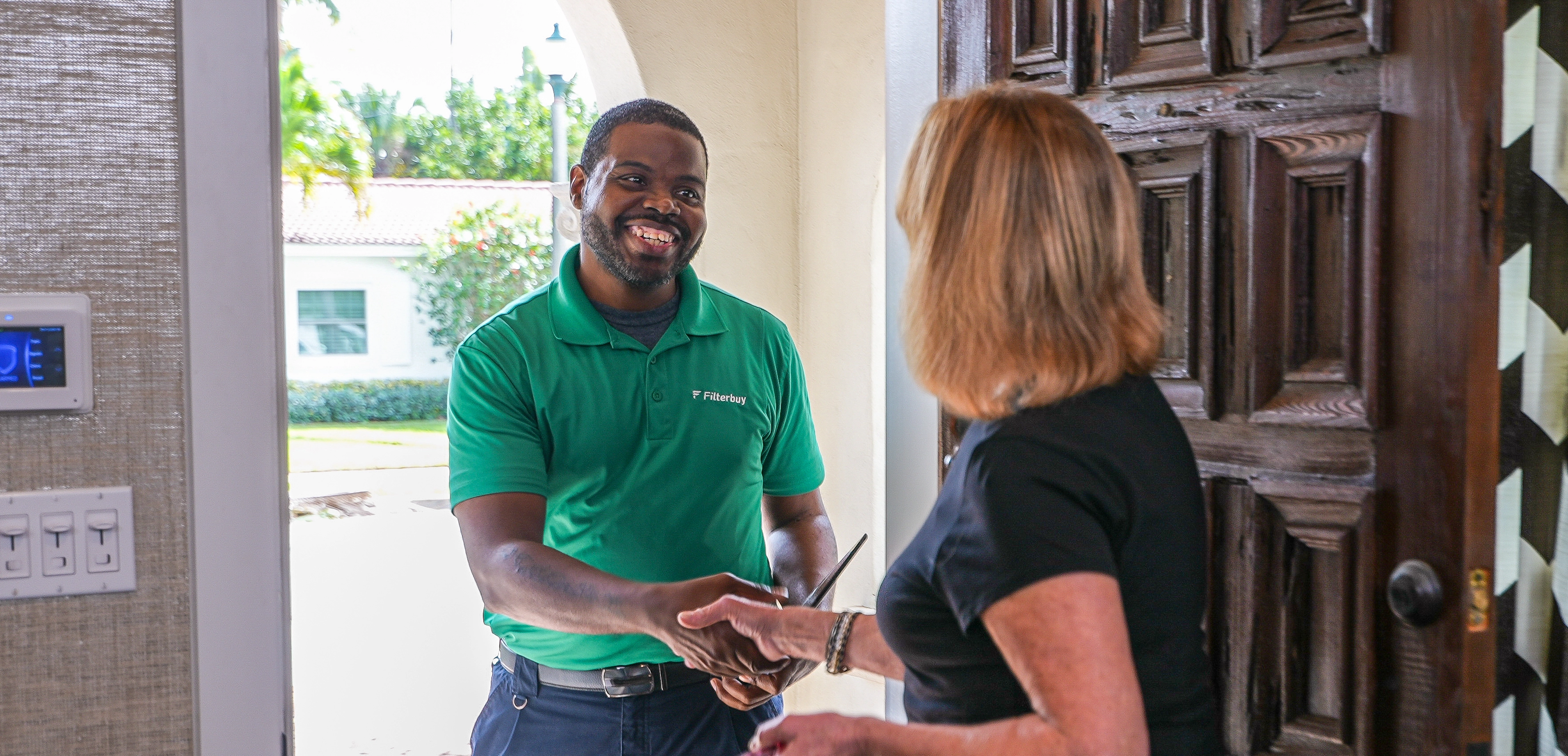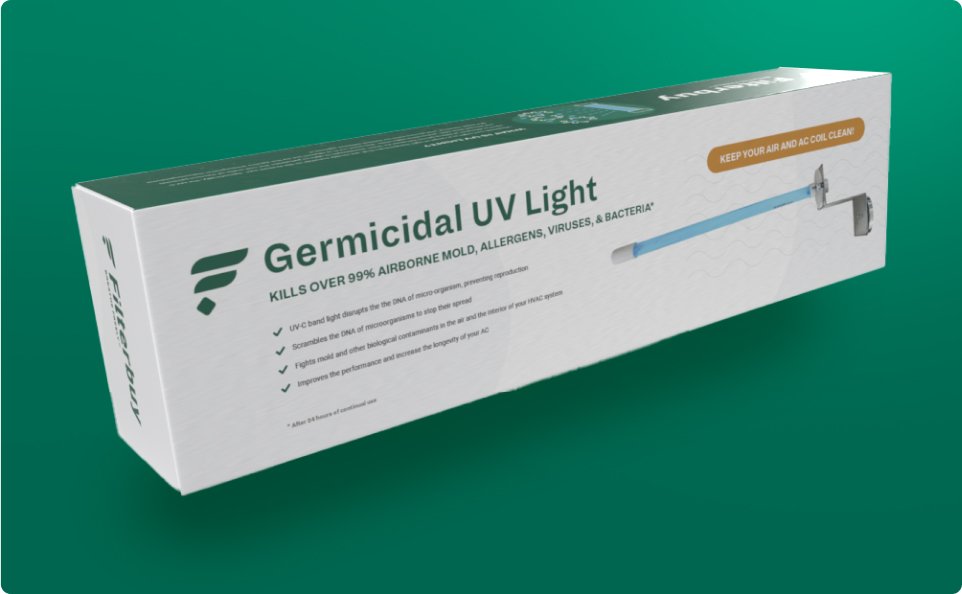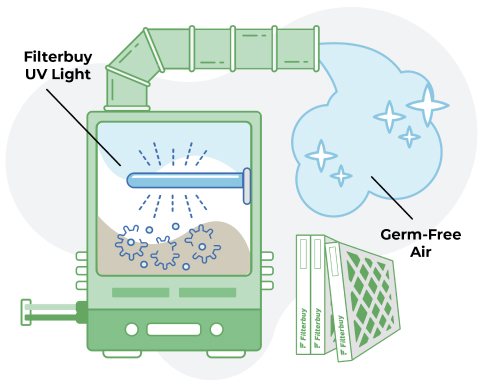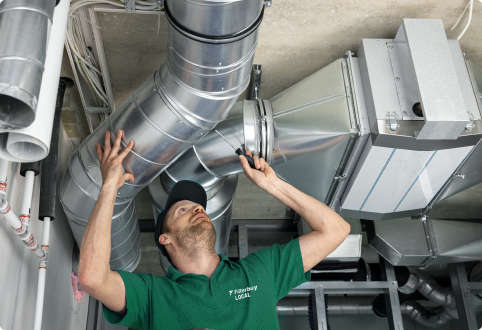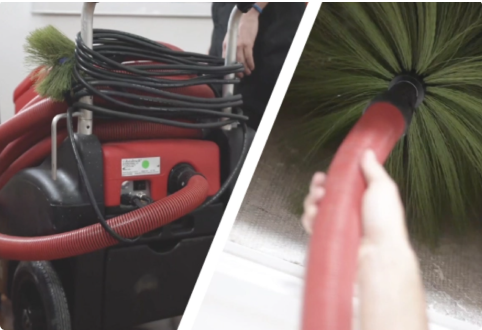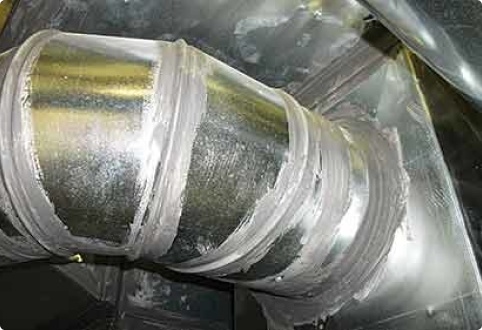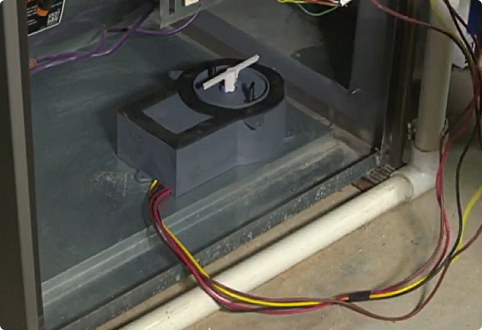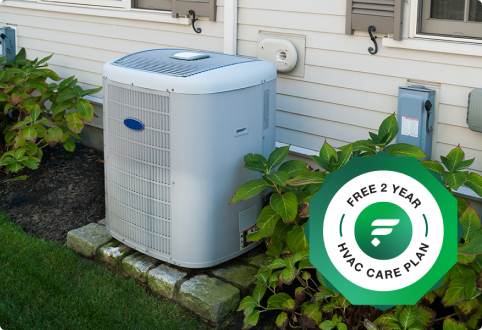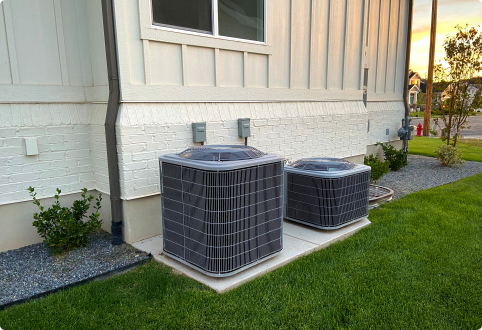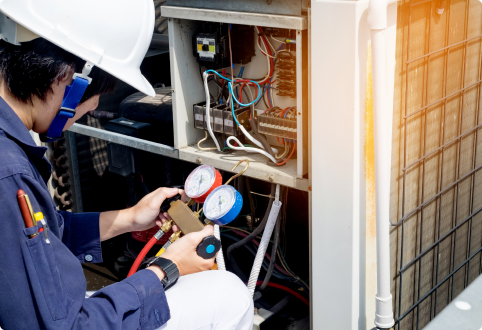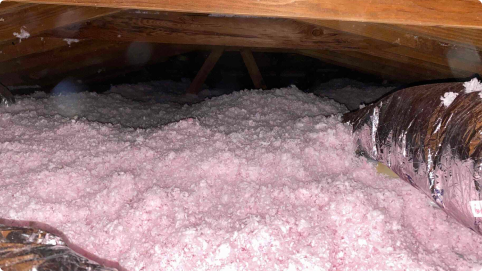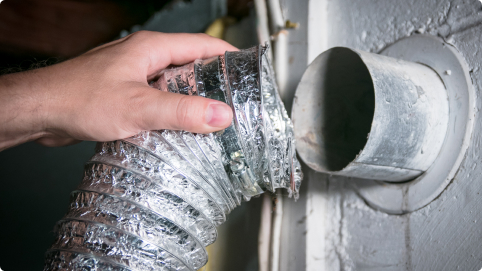Welcome to Filterbuy HVAC Solutions, the best HVAC UV light installation service company proudly serving in and near the greater Pembroke Pines, FL area. Please let us know how we can help solve your Pembroke Pines HVAC UV light installation needs with professional, affordable, and fast residential and commercial HVAC services by getting a free online quote or by giving our friendly HVAC specialists a call. We look forward to hearing from you!
HVAC UV Light Installation in Pembroke Pines FL
Your family deserves clean and healthy air at home. This is also the same for those occupying your commercial building. It may seem costly, but having an addition to your HVAC system can make wonders for your family or office space tenants when it comes to their respiratory health.
In Pembroke Pines, FL, UV light installation in HVAC systems is among the cost-efficient solutions of many households and commercial buildings for enhancing indoor air quality. This technology helps reduce airborne pathogens and allergens, potentially transforming your home and office into a healthier space.
While the benefits such as decreased microbial growth and improved system efficiency are compelling, selecting and installing the appropriate UV lighting for your home or office demands careful consideration. It involves understanding the different types of UV lights available, their specific functions, and the installation process to ensure compatibility and effectiveness.
Understanding UV Light Benefits
UV light installation in HVAC systems offers significant benefits, including improved air quality and system efficiency. Integrating UV technology into HVAC units primarily boosts air purification processes. By leveraging the germicidal properties of UV light, these systems effectively neutralize a broad spectrum of airborne pathogens such as viruses, bacteria, and mold spores. This not only contributes to a healthier indoor environment but also reduces the risk of disease transmission.
The germicidal efficiency of UV light is particularly noteworthy. It operates by disrupting the DNA or RNA of microorganisms, rendering them inactive or incapable of reproduction. This mechanism is crucial in environments that require stringent control over air quality, such as hospitals, schools, and homes with immunocompromised individuals.
Furthermore, UV light aids in maintaining the cleanliness of the HVAC system itself. Preventing the growth of microorganisms within the ducts and on coils reduces the buildup of biofilm and other contaminants that can impair the system's efficiency and longevity.
Thus, the adoption of UV technology in HVAC systems is a helpful way to ensure sustained air quality and system performance, marking a significant stride toward healthier living environments.
Types of HVAC UV Lights
Building on the benefits of UV light in HVAC systems, it is important to explore the different types available for installation in Pembroke Pines, FL. UV lights in HVAC units are primarily categorized based on the UV spectrum they emit and their positioning within the system.
The first type is the Coil Sterilization UV light, which is the most common. This light is installed in the return air duct and cycles on with the air handler unit. It primarily uses UV-C light to sterilize air as it passes through, focusing on the coils and drain pans. This positioning helps prevent microbial growth directly where moisture and condensation can accumulate.
The second type is the Air Sterilization UV light. Unlike Coil Sterilization, this UV light operates continuously and is installed in the return air duct or the main supply duct junction. Its strategic placement allows it to purify the air throughout the entire system, utilizing a broader spectrum of UV light to neutralize airborne pathogens before they circulate through the vents.
Both types of UV lights enhance indoor air quality significantly, leveraging different positions within the HVAC system and specific wavelengths within the UV spectrum to target and reduce airborne contaminants effectively.
How UV Lights Work
Harnessing the power of ultraviolet light, HVAC UV systems neutralize airborne contaminants by disrupting their DNA, effectively preventing their replication. Positioned within the light spectrum, UV light operates at wavelengths typically between 200 nm and 300 nm. This range is particularly effective for germicidal applications, making it a critical component in enhancing indoor air quality.
UV light's germicidal efficiency is primarily due to its ability to penetrate the cells of microorganisms and alter their genetic material. This alteration either kills the cells or renders them unable to reproduce, thus curbing the spread of pathogens. The most effective wavelength for germicidal activity is around 254 nm, which falls within the UV-C spectrum. This type of UV light is known for its robust disinfectant properties, targeting bacteria, viruses, mold, and other pathogens.
For HVAC systems, UV lights are strategically placed to maximize exposure to circulating air, ensuring that the air passing through the system is continuously treated. By integrating UV technology, HVAC systems not only contribute to a healthier environment by reducing the load of infectious agents but also maintain system efficiency by preventing microbial buildup on coils and other components.
Installation Process Overview
The installation of HVAC UV lights involves several key steps, starting with an assessment of the system to determine the optimal placement for the UV units. This initial phase is crucial as it influences the effectiveness of the UV light in controlling microbial growth within the air handling units. After the assessment, the next step involves tool selection, which is critical to ensure a smooth and safe installation process. Technicians typically require specialized tools such as UV-resistant goggles, screwdrivers, drills, and possibly HVAC gauges, depending on the complexity of the installation.
Professional certification is another important aspect of the installation process. Technicians who are certified have undergone rigorous training and are knowledgeable about the latest industry standards and safety protocols, which are essential when working with UV lighting systems and electrical components within HVAC units. Certification also reassures homeowners and commercial facility managers that the installation will be conducted with a high level of expertise and compliance with local regulations.
Once the proper tools are selected and a certified technician is at hand, the actual installation can proceed. This includes mounting the UV lights securely within the designated areas of the HVAC system, ensuring they are positioned to maximize air purification without obstructing airflow or access for future maintenance.
Choosing the Right UV Light
Selecting the appropriate UV light for your HVAC system is crucial for ensuring optimal functionality and efficiency in microbial control. When choosing a UV light, consider factors such as light intensity, which is measured in microwatts per square centimeter. Higher light intensity levels often mean more effective disinfection, as they can effectively neutralize a broader range of pathogens that may circulate through the air handling system.
Another vital factor to consider is the bulb lifespan. UV light bulbs vary significantly in how long they last before needing replacement. Typically, most UV bulbs designed for HVAC systems have a lifespan ranging from 9,000 to 14,000 hours. Opting for bulbs with a longer lifespan not only ensures sustained protection against microbes but also reduces maintenance frequency and associated costs over time.
When selecting a UV light system, it is also essential to match the specifications of the UV system with your HVAC unit's size and layout. Some systems are better suited for smaller residential units, while others are designed for larger, commercial environments. Always consult with a professional technician who can assess your specific needs based on the characteristics of your HVAC system and recommend the most suitable UV light solution.
Cost Considerations
Understanding the financial implications of installing a UV light system in your HVAC is helpful for effective budget management. The initial cost of UV light systems in Pembroke Pines, FL, varies depending on the type and size of the unit, typically ranging from a few hundred to over a thousand dollars. However, homeowners should consider not only the upfront cost but also the potential long-term savings. UV lights can significantly reduce energy consumption by maintaining clean HVAC coils, leading to lower electricity bills.
Additionally, exploring energy rebates offered by local utility companies or government incentives can substantially offset the installation costs. These rebates are designed to encourage the adoption of energy-efficient technologies, which include UV HVAC systems known for improving indoor air quality and reducing energy usage.
Financing options are also available for those who find the initial investment prohibitive. Many HVAC service providers in Pembroke Pines offer financing plans that allow for manageable monthly payments. This can be an excellent way to spread out the cost over time while immediately benefiting from the energy savings and enhanced air quality provided by the UV light system. Prospective buyers should consult with local providers to find the best available terms.
Maintenance Tips for UV Lights
After considering the financial aspects of UV light systems, regular maintenance is key to ensuring their efficiency and longevity. To maximize the bulb longevity and maintain optimal efficiency metrics, it's essential to routinely check and replace the UV bulbs as recommended by the manufacturer. Typically, UV bulbs are effective for about 9000 to 12000 hours of use, which translates to approximately 1 year of continuous operation. Regularly replacing these bulbs ensures that the UV light continues to function at its peak capability, effectively controlling microbial growth and maintaining air quality.
In addition to bulb replacement, cleaning the lamps is also crucial. Dust and dirt can accumulate on the bulb's surface, significantly diminishing its UV output and efficiency. Cleaning should be conducted at least every six months with a soft cloth and alcohol to remove any obstructions that could block the UV light.
Furthermore, it's important to monitor the HVAC system's overall performance and check for any signs of decreased airflow or increased energy usage, as these could indicate issues with the UV system's effectiveness. Keeping a log of maintenance activities related to the UV system can help track its performance and improve its operational lifespan.
Safety and Precautions
When installing UV lights in HVAC systems, it is crucial to adhere to specific safety guidelines to protect both the technician and the system's integrity. The use of protective gear is mandatory to ensure that the exposure to UV radiation remains within safe limits. UV radiation can cause serious harm to the skin and eyes, making it essential to mitigate these risks through proper precautions.
To enhance safety, consider the following:
1. Wear Appropriate Protective Gear: Always use gloves, long-sleeved clothing, and eye protection specifically designed to block UV rays. This will minimize direct exposure to the skin and eyes.
2. Understand and Respect Exposure Limits: Familiarize yourself with the exposure limits set by health and safety regulations. Ensure that time spent in environments with active UV light is minimized to prevent overexposure.
3. Secure and Isolate the Area: During installation, clearly mark and isolate the area where UV lights are active. This will prevent unauthorized or unprotected personnel from entering and being exposed to harmful UV radiation.
Common Mistakes to Avoid
To ensure the effectiveness and safety of HVAC UV light installation, it is crucial to avoid several common mistakes. One of the most significant errors is the incorrect positioning of the UV light within the HVAC system. Proper placement is essential for maximizing the UV light's effectiveness in controlling mold and bacteria growth. If the UV light is placed too far from the coils or in areas with limited air exposure, its ability to cleanse the air efficiently decreases significantly.
Another critical issue to watch out for is wiring errors. Incorrect wiring not only jeopardizes the functionality of the UV light system but also poses serious safety risks. It's essential to ensure that all electrical connections are secure and comply with industry standards. Wiring should be handled by a qualified technician to avoid loose connections that could lead to electrical shorts or malfunctions.
Avoiding these mistakes will not only enhance the performance of your HVAC UV light system but also extend its lifespan and ensure it operates safely. Proper installation is key to achieving the desired air quality improvements and ensuring that the system functions at its best without frequent maintenance issues.
Local Regulations and Standards
Understanding local regulations and standards is another fundamental aspect of HVAC UV light installation in Pembroke Pines, FL. When planning to install an HVAC UV light, homeowners and contractors must navigate a series of local permit requirements and inspection protocols to ensure compliance with municipal codes. These measures are in place to guarantee that installations are performed safely and effectively, minimizing potential hazards and enhancing the overall air quality in residential and commercial properties.
Here are crucial elements to consider:
1. Permit Requirements: Before any installation begins, it's crucial to secure the necessary permits from the Pembroke Pines city office. This process involves submitting detailed installation plans and specifications for review by local authorities.
2. Inspection Protocols: After the installation, a city inspector will typically conduct a thorough review to ensure that the setup complies with all local health and safety standards. This step is vital for obtaining final approval.
3. Code Compliance: Adhering to specific local building and electrical codes is non-negotiable. These codes govern the installation of electrical systems, including UV lights, to prevent issues such as electrical overloads and fire hazards.
Frequently Asked Questions
How Much Does It Cost to Install UV Light in HVAC?
Installing UV lights in your HVAC system can vary in cost depending on the type of UV light system you choose, the size of your HVAC system, and any additional installation requirements. UV light systems typically range from a few hundred to a few thousand dollars. Factors that can influence the cost include the quality of the UV light system, the installation complexity, and any additional features or services provided by the installer.
Is It Worth Installing UV Light in the HVAC?
Whether it is worth installing UV lights in your HVAC system depends on your specific needs and circumstances. UV lights in HVAC systems can help improve indoor air quality by killing mold, bacteria, and viruses that can circulate through the system. This can be particularly beneficial for individuals with respiratory issues or allergies. Additionally, UV lights can help prevent mold growth within the HVAC system, leading to better system efficiency and potentially reducing maintenance costs over time. However, the upfront cost of installation and ongoing maintenance should be considered when determining if it is worth it for your situation.
Can I Install a UV Light in My HVAC System?
In most cases, you can install a UV light in your HVAC system. However, it is recommended to consult with a professional HVAC technician to ensure proper installation. The technician can assess your system, recommend the appropriate type of UV light, and install it correctly to maximize its effectiveness and longevity.
What Is the Disadvantage of UV Light in HVAC?
One disadvantage of UV lights in HVAC systems is that they may not be effective against all types of indoor air pollutants. While UV lights can help kill mold, bacteria, and viruses, they may not be as effective against dust, pet dander, or other particulate matter. Additionally, UV lights require regular maintenance to ensure optimal performance, which can add to the overall cost of ownership.
Do HVAC UV Lights Use a Lot of Electricity?
HVAC UV lights typically use minimal electricity compared to the overall energy consumption of the HVAC system. The energy usage of UV lights is generally low, making them an energy-efficient addition to your HVAC system. However, it is important to consider the energy consumption of the UV light system when evaluating its overall impact on your utility bills.
Does UV Light Damage AC Coils?
UV light can potentially damage AC coils if the UV light system is not installed properly or if the UV light intensity is too high. UV light can degrade certain materials over time, and prolonged exposure to UV light can weaken or damage AC coils. Proper installation and maintenance of the UV light system are essential to prevent damage to AC coils.
What Is the Life Expectancy of a UV Light for HVAC?
The life expectancy of a UV light for HVAC systems can vary depending on the quality of the UV light system, the intensity of the UV light, and how well it is maintained. On average, UV light bulbs can last anywhere from 9,000 to 14,000 hours of continuous use, which translates to around one to two years of operation. Regularly replacing UV light bulbs as recommended by the manufacturer can help ensure optimal performance and longevity of the system.
Can UV Light Damage the Air Handler?
UV light can potentially damage the air handler if the UV light intensity is too high or if the air handler is not properly protected from direct exposure to UV light. It is important to install UV lights in a way that minimizes direct exposure to sensitive components like the air handler to prevent any potential damage.
Will UV Light Damage an Air Filter?
UV light itself does not damage air filters. UV lights can help improve air quality by killing mold, bacteria, and viruses that may accumulate on air filters. However, it is important to regularly replace air filters as recommended by the manufacturer to maintain optimal HVAC system performance and indoor air quality.
Do HVAC UV Lights Get Hot?
HVAC UV lights are designed to produce UV light without generating significant heat. The UV light bulbs used in HVAC systems are specifically designed to emit UV light without producing excessive heat, ensuring safe and effective operation within the HVAC system.
Do I Need a Whole House UV Light?
Whether you need a whole-house UV light system depends on your specific needs and the size of your home. A whole-house UV light system is typically installed in the HVAC system to treat all the air that passes through the system. This can be beneficial for improving overall indoor air quality and reducing the spread of airborne contaminants throughout your home.
Do HVAC UV Lights Smell?
HVAC UV lights are not known to emit any noticeable odor or smell when properly installed and maintained. UV lights are designed to operate silently and without emitting any odors, ensuring that they do not interfere with your indoor air quality or comfort.
Here is the nearest branch location serving the Pembroke Pines area…
Filterbuy HVAC Solutions - Weston FL
2573 Mayfair Ln, Weston, FL 33327
(754) 296-3528
https://maps.app.goo.gl/ygix5h2okMHeexmr9

.webp)
.webp)
.webp)
.webp)




